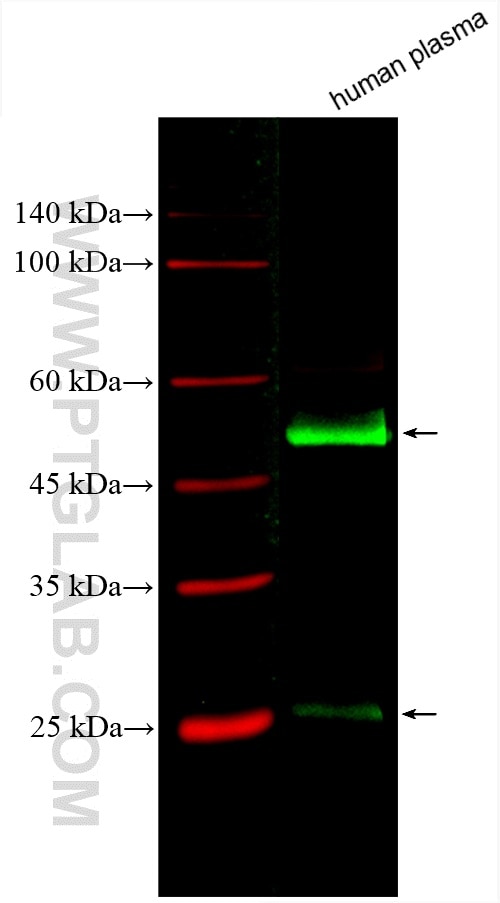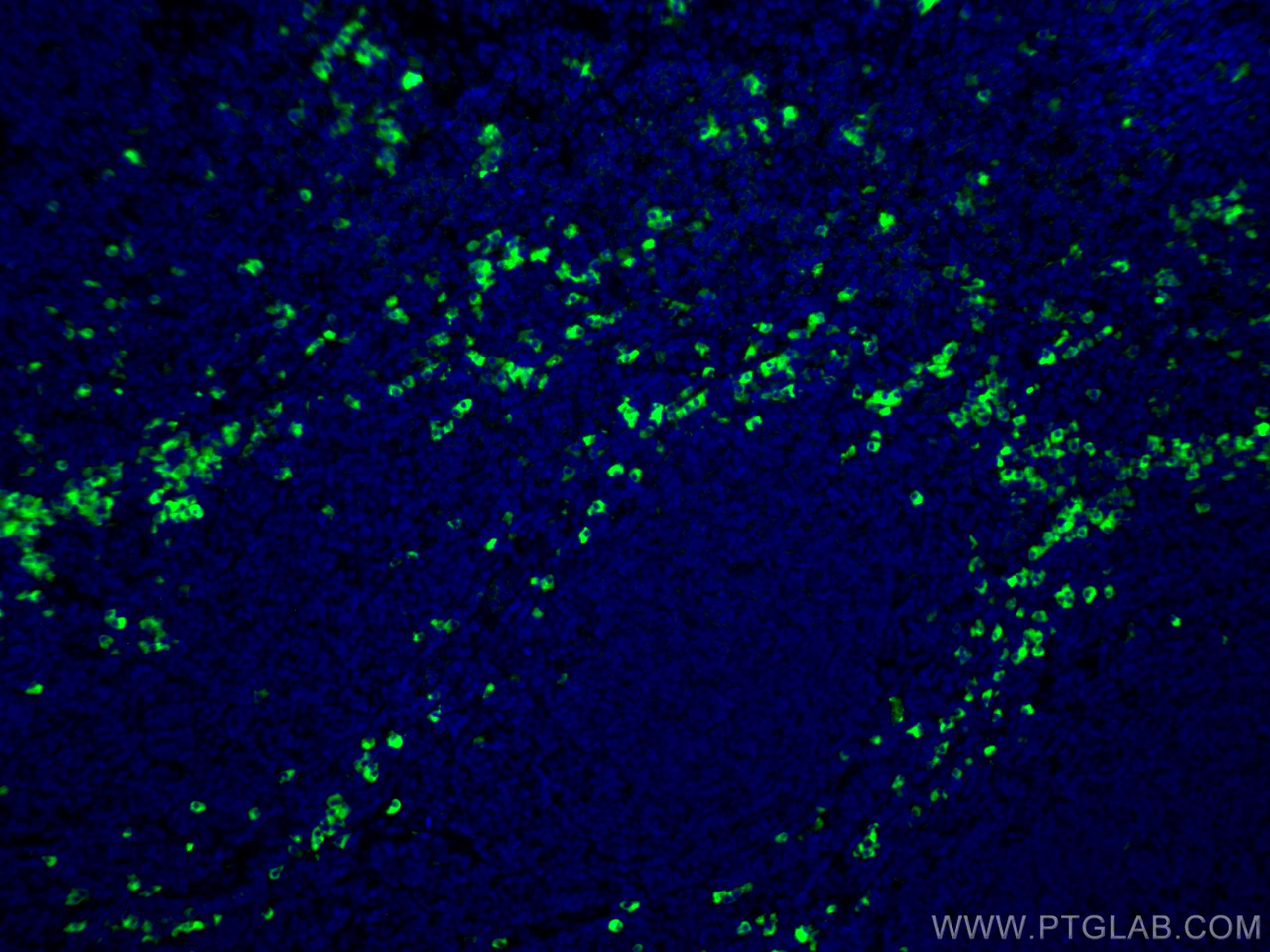Anticorps Polyclonal de lapin anti-Human IgG
Human IgG Polyclonal Antibody for WB, IF-P
Hôte / Isotype
Lapin / IgG
Réactivité testée
Humain
Applications
WB, IF-P
Conjugaison
CoraLite® Plus 488 Fluorescent Dye
N° de cat : CL488-10284
Synonymes
Galerie de données de validation
Applications testées
| Résultats positifs en WB | plasma humain, |
| Résultats positifs en IF-P | tissu d'amygdalite humain, |
Dilution recommandée
| Application | Dilution |
|---|---|
| Western Blot (WB) | WB : 1:1000-1:4000 |
| Immunofluorescence (IF)-P | IF-P : 1:50-1:500 |
| It is recommended that this reagent should be titrated in each testing system to obtain optimal results. | |
| Sample-dependent, check data in validation data gallery | |
Applications publiées
| IF | See 1 publications below |
Informations sur le produit
CL488-10284 cible Human IgG dans les applications de WB, IF-P et montre une réactivité avec des échantillons Humain
| Réactivité | Humain |
| Hôte / Isotype | Lapin / IgG |
| Clonalité | Polyclonal |
| Type | Anticorps |
| Immunogène | Protéine recombinante |
| Nom complet | Human IgG |
| Masse moléculaire calculée | 155 kDa |
| Poids moléculaire observé | 25 kDa, 50 kDa, 150 kDa |
| Symbole du gène | |
| Identification du gène (NCBI) | |
| Conjugaison | CoraLite® Plus 488 Fluorescent Dye |
| Excitation/Emission maxima wavelengths | 493 nm / 522 nm |
| Forme | Liquide |
| Méthode de purification | Purification par affinité contre l'antigène |
| Tampon de stockage | PBS with 50% glycerol, 0.05% Proclin300, 0.5% BSA |
| Conditions de stockage | Stocker à -20 °C. Éviter toute exposition à la lumière. Stable pendant un an après l'expédition. L'aliquotage n'est pas nécessaire pour le stockage à -20oC Les 20ul contiennent 0,1% de BSA. |
Informations générales
This rabbit poly clonal antibody recognizes the human IgG.
Protocole
| Product Specific Protocols | |
|---|---|
| WB protocol for CL Plus 488 Human IgG antibody CL488-10284 | Download protocol |
| IF protocol for CL Plus 488 Human IgG antibody CL488-10284 | Download protocol |
| Standard Protocols | |
|---|---|
| Click here to view our Standard Protocols |
Publications
| Species | Application | Title |
|---|---|---|
Cell Spatial transcriptomic landscape unveils immunoglobin-associated senescence as a hallmark of aging | ||
Oxid Med Cell Longev Adropin Improves Radiation-Induced Myocardial Injury via VEGFR2/PI3K/Akt Pathway |



